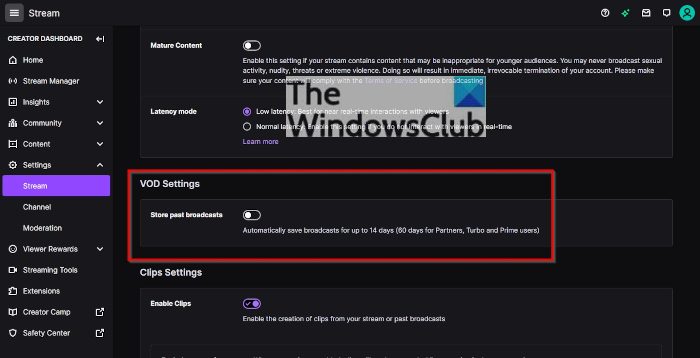In the dynamic and often volatile world of live streaming, numbers frequently tell a dramatic story. So, when reports from the analytics firm Streams Charts indicated a significant dip in Twitch`s key metrics for August 2025—reaching what some heralded as a five-year low—the headlines were, as expected, rather stark. An 8% reduction across average viewers, total watch hours, and even the variety of streamed titles. Active channels reportedly shrunk by 14% to 4.1 million. And the peak viewership? A staggering 73% drop, settling at 3.7 million. On the surface, it sounded like a crisis, a platform in distress.
However, as any seasoned observer of digital ecosystems can attest, raw numbers rarely convey the complete truth without proper context. And in this particular narrative, the context is not just important; it’s absolutely everything.
Unmasking the Phantoms: Twitch`s Bot Purge
The primary catalyst for this apparent “decline” isn`t a sudden, widespread loss of interest in engaging content or competitive gaming. Instead, it appears to be a deliberate, albeit statistically jarring, act of digital housekeeping by Twitch itself. August 2025 marked a period where the platform reportedly rolled out updated algorithms specifically designed to detect and combat view botting and other forms of artificial engagement.
For years, view bots have been a persistent plague on the streaming landscape. These automated accounts, often operating in vast, coordinated networks, inflate viewership numbers, create a false sense of popularity for certain channels, and ultimately muddy the waters for genuine content creators and advertisers alike. Imagine stepping into a seemingly bustling concert hall, only to discover that half the audience are mere cardboard cutouts. It might look impressive from a distance, but the applause, when it comes, is distinctly hollow and artificial.
Twitch`s decisive crackdown on these digital phantoms is, therefore, less an indication of dwindling popularity and more a necessary—and arguably overdue—purification of its platform. When the artificial fluff is systematically swept away, what remains is a clearer, more authentic reflection of true user engagement. It`s akin to a stock market correction: potentially painful in the immediate term, but often essential for long-term health, stability, and genuine growth.
The Numbers Game: A Closer Look at the `Dip`
Let`s dissect those attention-grabbing numbers with a lens of clarity, rather than alarm.
- The 8% drop in average metrics across various categories suggests that a substantial portion of what was previously counted as “viewership” was, in fact, non-human or artificially generated.
- The 14% reduction in active channels is a likely consequence of channels that relied heavily on bots to appear more active or popular suddenly losing their artificial crutch. It’s a natural recalibration.
Perhaps the most dramatic figure, the 73% plummet in peak viewers, demands even greater nuance. Streams Charts themselves pointed out that July`s peak viewership was exceptionally inflated by a single, colossal event: streamer Ibai Llanos Garatea`s record-breaking boxing spectacle, which pulled in over 9.3 million concurrent viewers. This was an anomaly, a meteoric flash across the night sky, not the steady, consistent glow of the moon. Comparing August`s “return to standard numbers” (as the report accurately noted) against such an outlier paints a distorted, if not misleading, picture. Removing the “Ibai effect,” the true decline in peak viewership might be far less dramatic, merely settling back to pre-event norms, but now with significantly fewer bots skewing the baseline.
The Platform`s Official Stance: “Disinformation”?
Curiously, Twitch representatives reportedly dismissed these reports of declining values as “disinformation.” While this might initially sound contradictory to the narrative of a bot purge, it could be interpreted in a few nuanced ways. Perhaps Twitch views any interpretation of these numbers as solely representing a negative trend as disinformation, arguing instead that these metrics now represent a truer, healthier, and ultimately more valuable state of the platform. Or perhaps, in the grand tradition of corporate communications, they simply prefer to manage the public narrative on their own terms, sidestepping any talk of “decline” when they perceive the underlying action as a strategic step forward. After all, admitting to a “decline”—even if it`s a “healthy decline”—can be a particularly tricky public relations tightrope walk.
What This Means for the Future of Streaming
This “Great Reset” has profound implications for the entire streaming ecosystem. For legitimate content creators, it offers a more level and equitable playing field. Success will increasingly be measured by genuine audience connection, authentic engagement, and the consistent delivery of quality content, rather than who can afford or deploy the most sophisticated bot network. For advertisers, it translates to greater transparency and a more accurate return on investment, as their valuable campaigns will reach actual human eyeballs with legitimate interest.
For viewers, it promises a more authentic and trustworthy experience, free from the often-demoralizing perception that certain channels are popular solely due to artificial manipulation. Twitch, in essence, appears to be making a strategic pivot: prioritizing the long-term integrity and authenticity of its ecosystem over inflated, vanity metrics. While the headlines may initially scream “decline,” the underlying reality strongly suggests a platform choosing authenticity and real value. And in the long run, for a platform built on community, interaction, and genuine engagement, that`s a metric far more valuable than any bot could ever simulate.

